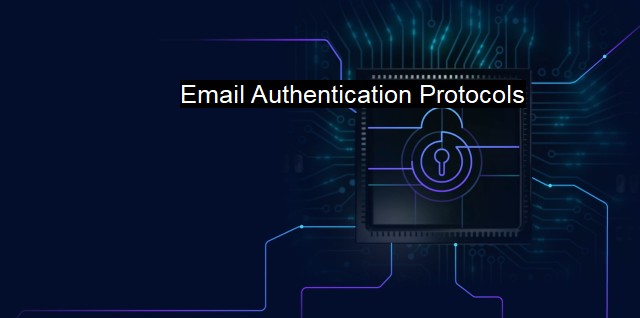What are Email Authentication Protocols?
Protecting your emails and cybersecurity with Email Authentication Protocols: A Critical Analysis
Email authentication protocols are a critical component within the sphere of cybersecurity and antivirus strategies, devised to confirm the authenticity of an email's origin. The main intention of such protocols is safeguarding against cyber threats such as phishing, spoofing, and other email-based frauds. These protocols bring an additional layer of protection, allowing recipients to verify that an email claiming to originate from a specific domain indeed matches up to the data servers of the said domain.The mechanism behind email authentication protocols is sophisticated but important to understand in the context of internet security and cybersecurity. Generally, email servers use these protocols to validate that incoming email from a domain, as claimed by the sender, was authorized by the domain's administrators. Depending on the protocol, this is accomplished by looking at the domain's public records or by exchanging encrypted keys.
Let's explore some commonly used mechanisms of email authentication protocols:
The Simple Mail Transfer Protocol (SMTP, the standard protocol for sending emails across the internet) by itself doesn't provide authentication, as it was not designed to verify senders or secure emails against tampering. Hence other security protocols are layered on top of it.
Sender Policy Framework (SPF) is an email authentication mechanism that is employed to prevent spoofing. SPF allows the receiving mail server to check the incoming email to ensure the information included within the email—precisely, the sending IP address—is authorized by the domain's administrators.
DomainKeys Identified Mail (DKIM) is another protocol. It provides an encryption key and digital signature that validates that an email message was not faked or altered. This method confirms that the messages' headers are untampered and genuinely from the sender. Thus, it acts as a tracker of the email's journey, ensuring it arrives untampered from origin to endpoint.
Domain-based Message Authentication, Reporting & Conformance (DMARC) protocol, links the SPF and DKIM mechanisms. It gives the authentication a broader spectrum. It uses the other two protocols but includes a policy defining how to manage emails failing the authentication tests and where reports about such emails should be sent.
Bulk Mail Transfer Protocol (BMTP) offers an alternative to SMTP, providing both automated authentication of the connection session via encryption keys and better tracking and control over the transport session.
These email authentication protocols play an integrated role in an overall cybersecurity and antivirus strategy. They help to filter out malicious emails that might carry viruses, ransomware, or phishing attempts. As more and more business communications are conducted over email, these protocols become even more crucial to secure business environments and protect sensitive data.
Apart from protecting an organization from incoming threats, email authentication protocols also help to protect the reputation of businesses by ensuring their domain cannot be used to dispatch malicious emails. This is increasingly significant in an age where trust is paramount and brand reputation can be considerably affected by whether domains are seen as secure or insecure.
Email authentication protocols are an indispensable part of cybersecurity architecture. While there are multiple mechanisms providing added layers of assurance at various levels in the communication process, it is essential for businesses to diligently combine these measures. Such endeavor can deliver a robust fortress, preventing unwarranted entry of threats into the system and safeguarding all the communication being exchanged. A robust email authentication system thus plays an instrumental role in lowering the risk, enhancing the security landscape, and maintaining a businesses' reputation amidst growing cyber threats.

Email Authentication Protocols FAQs
What are email authentication protocols?
Email authentication protocols are a set of methods that verify the identity of the sender of an email message. They are used to prevent email fraud, phishing attacks, and other types of email-based cyber threats.Why are email authentication protocols important for cybersecurity?
Email authentication protocols help prevent cyber criminals from impersonating legitimate senders or creating fake email identities. This helps ensure that email messages are sent from trusted sources and that the contents of those messages are secure.What are some common email authentication protocols?
Some common email authentication protocols include SPF (Sender Policy Framework), DKIM (DomainKeys Identified Mail), and DMARC (Domain-based Message Authentication, Reporting & Conformance). These protocols work together to provide a comprehensive approach to email authentication.How do email authentication protocols work with antivirus software?
Email authentication protocols work alongside antivirus software to provide added layers of protection against cyber threats. The protocols help prevent email-based attacks from getting through to users' inboxes, while antivirus software scans email messages and attachments for malware and other malicious code. Together, these technologies can help prevent a wide range of cyber attacks.| | A | | | B | | | C | | | D | | | E | | | F | | | G | | | H | | | I | | | J | | | K | | | L | | | M | |
| | N | | | O | | | P | | | Q | | | R | | | S | | | T | | | U | | | V | | | W | | | X | | | Y | | | Z | |
| | 1 | | | 2 | | | 3 | | | 4 | | | 7 | | | 8 | | |||||||